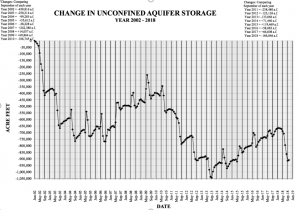ALAMOSA—Colorado’s San Luis Valley faces a water crisis that threatens survival of thousands of residents due to over use and over development of a marginal supply.
Over the past 100 years, insurance companies subsidized the development of the San Luis Valley by offering coverage to farmers. Those companies helped promote this arid, desolate part of the United States as an agricultural paradise.
Producing under the hard conditions here has always required heavy irrigation. And downriver users in New Mexico, Texas and Mexico demand that some water be left in the Rio Grande River. So farmers here are obligated to put some of the water they divert for irrigation back into the river.
That hasn’t always happened due to over use and drought. Yet farmers want to uphold their tradition in the San Luis Valley, a tradition that relies on pumping underground water from aquifers to irrigate crops.
Now 550,000 acres in the valley are being irrigated. But the valley probably can support only support about 400,000 acres, Rio Grande Water Conservation District Manager Cleave Simpson said during a recent meeting at his office in Alamosa. There may have to be a 20 percent decrease in agricultural land to restore aquifer levels Simpson said. If the aquifer levels don’t return to normal levels by 2030, the state government will cease and desist orders to stop wells in the valley from over pumping, he said. Farmers around wells could be driven out of business.
Water flows in the Rio Grande river this past year were among the lowest ever. The 2018 predicted annual flow is 290,000-acre feet of water compared to a 700,000-acre foot historic average. This is nearly one third of the water which should be running through the San Luis valley.
“We are approaching the carrying capacity,” Simpson said. Nature maybe incapable of supporting this much life in a barren land, he said. The state’s population is projected to double in the next 30 years, which could worsen water tensions.
The main crop irrigated is alfalfa, used to feed livestock. Some critics contend livestock maybe an ineffective way to use water.
People living in the San Luis Valley rank among the poorest in Colorado. There is a very low return on investment in agriculture.
“My farm would not be profitable if I had to pay for the water I pumped” Cleave Simpson said.
Each acre-foot of water cost $75 in the valley. If moved by pipe to Colorado’s urbanized Front Range, each acre-foot of water likely will rise to $90. Farmers typically earn less than $70,000 a year.
“It would be devastating. It’s all my dad knows. I don’t know if there is a future,” Simpson said.
Many ideas have been proposed to bring in a different source of income to the valley. Some naysayers act as if climate change is not happening in the valley and treating water as if it was still a plentiful resource. The tradition of agriculture will slowly die in the San Luis Valley if water continues to be used at the same rate.
There are not many people from younger generations who want to uphold the traditions of farming. In the San Luis Valley 20,000 acres have been taken out of production. The state has implemented $20 incentives to not irrigate an acre for a year. The government buys land just to not irrigate it. The San Luis Valley demonstrates a small example of the problems the arid west faces in agriculture.

Source – Rio Grande Water Conservation District

